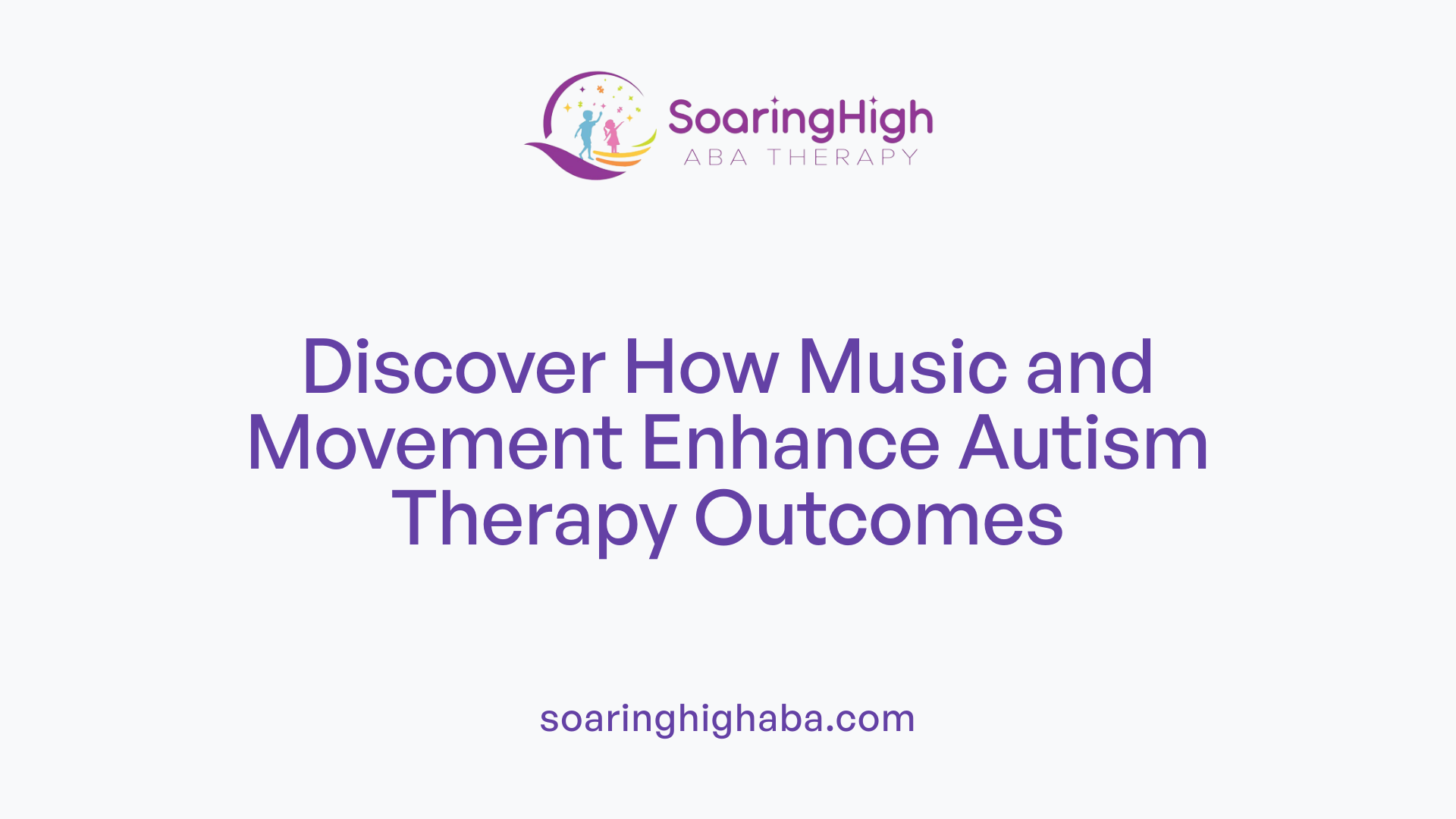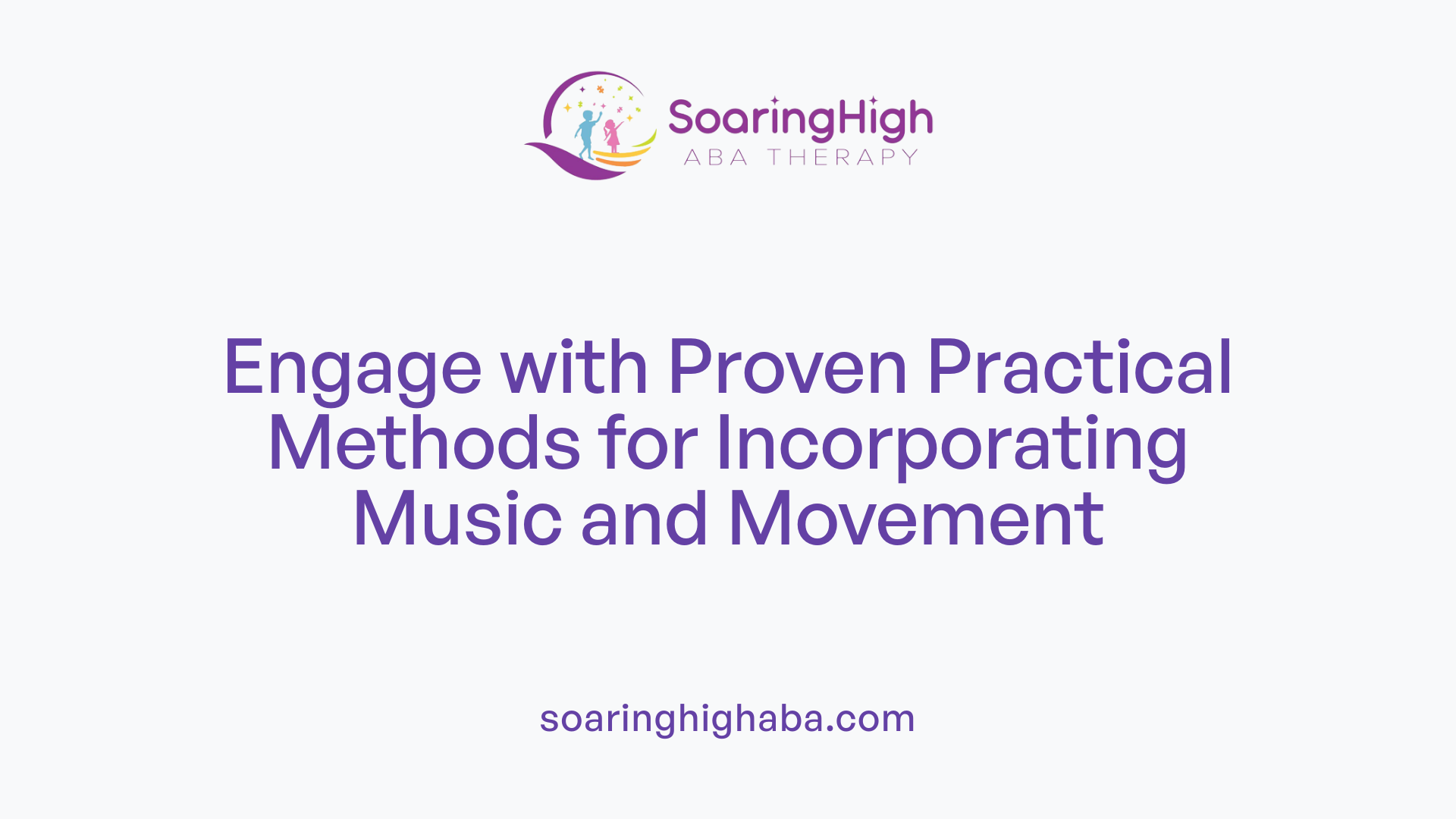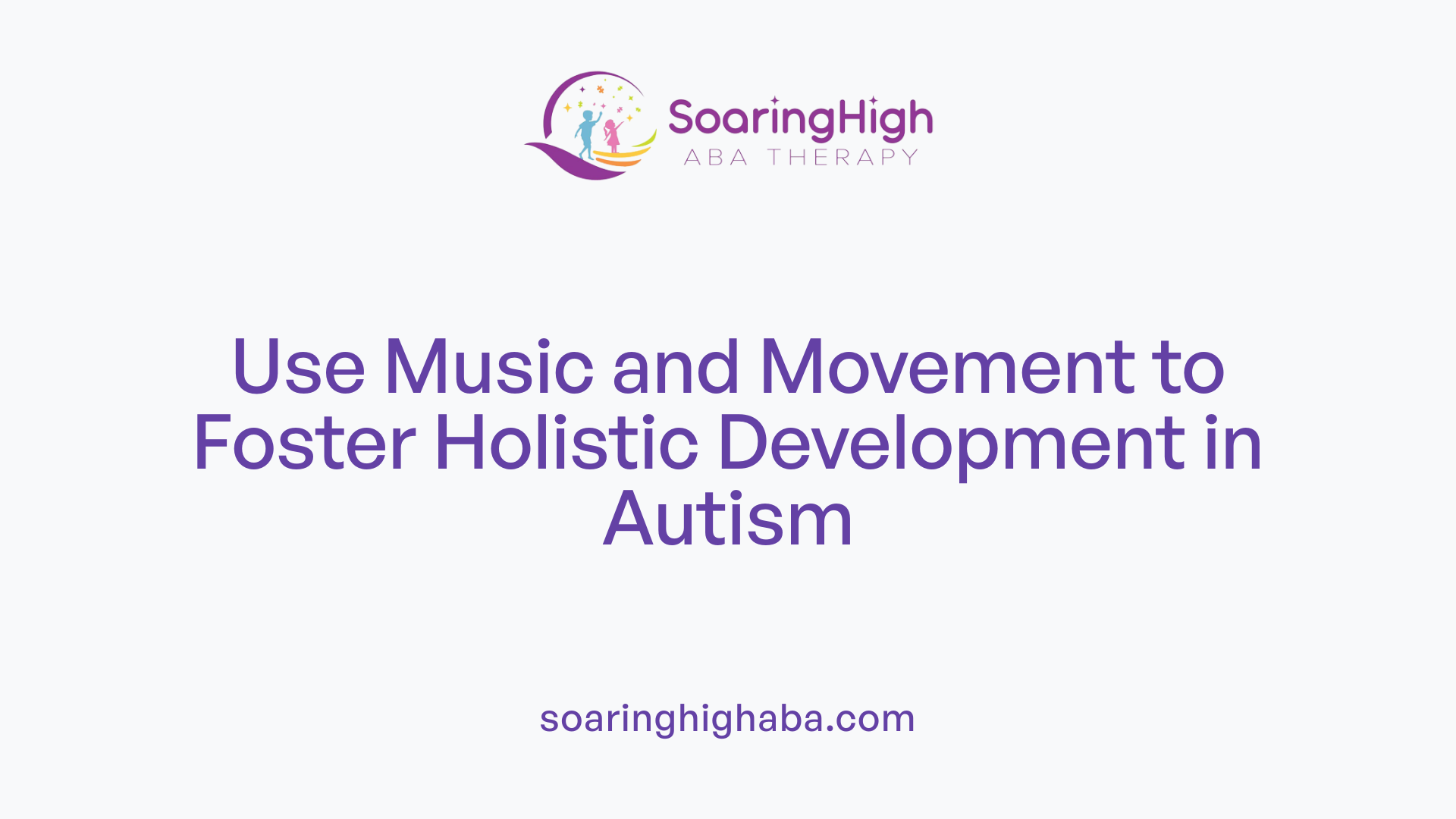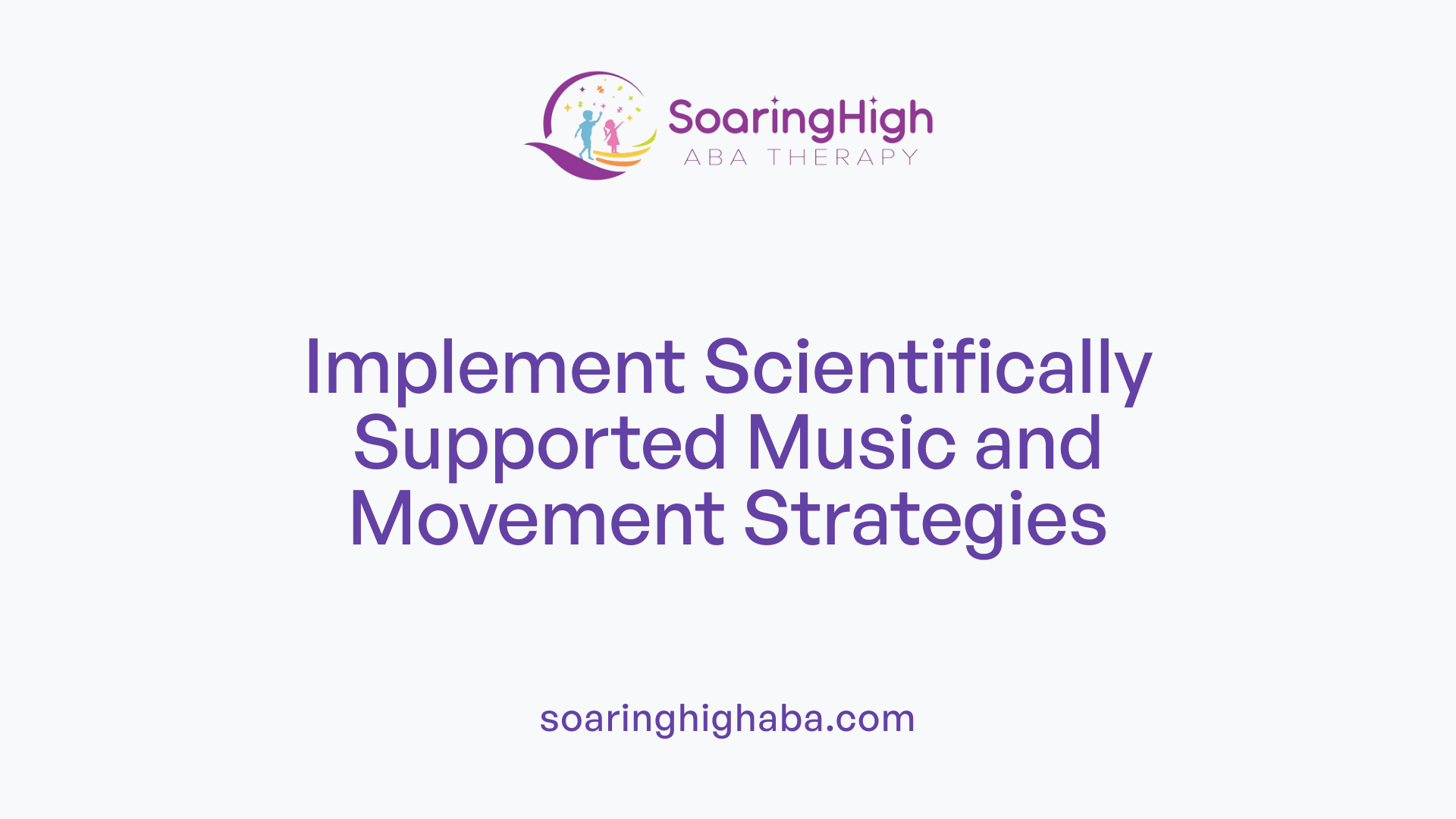Integrating Music and Movement into ABA Therapy for Enhanced Outcomes
Incorporating music and movement into Applied Behavior Analysis (ABA) therapy offers a promising, multisystem approach to supporting individuals with autism. These strategies leverage the engaging and therapeutic qualities of musical activities and physical motion to foster social, communicative, and sensorimotor development. This article explores effective methods, proven strategies, and resources designed to help therapists seamlessly incorporate music and movement into autism interventions, ultimately aiming to improve behavioral, emotional, and developmental outcomes.
The Benefits of Music and Movement in Autism Therapy

What are the benefits of including music and movement in therapy for individuals with autism?
Incorporating music and movement into autism therapy provides a range of positive outcomes that support comprehensive development. Music therapy uses musical activities like singing, instrument playing, and rhythmic movement to improve social skills, communication, and emotional regulation. Studies reveal that such interventions can boost joint attention, social reciprocity, and verbal expression, facilitating better social interactions inside and outside sessions.
Movement components, such as dance, body percussion, or trampoline jumping, aid in sensorimotor development. They help children improve motor coordination, balance, and body awareness, which are essential for daily functioning. These physical activities often lead to better self-regulation of emotions and behaviors, helping children manage overstimulation or sensory sensitivities.
At a neurological level, engaging with music and movement encourages brain plasticity—the capacity of the brain to change and adapt. This fosters improved neural connectivity across regions responsible for speech, emotion, and social cognition. Moreover, musical activities promote emotional expression and shared experiences, enhancing social bonding and reducing stress.
Ultimately, music and movement-based therapies contribute to a better overall quality of life for individuals with autism. They create joyful and engaging environments that motivate children, support their learning, and help express emotions in safe, creative ways. These approaches offer multisystem, holistic interventions that align with each child's unique strengths and needs, providing a foundation for meaningful growth.
Incorporating Music and Movement into ABA Therapy: Core Methods

What are effective methods for incorporating music and movement into ABA therapy?
Integrating music and movement into ABA therapy involves leveraging these elements as tools to motivate children, reinforce desired behaviors, and teach new skills. One effective approach is using musical stimuli as positive reinforcement. For instance, a child might be rewarded with singing or playing an instrument after successfully completing a target behavior. This naturally increases motivation and engagement.
Therapists also pair specific target behaviors with musical activities. For example, singing a song that contains the words or phrases the child is learning can promote vocalization and language development. Rhythm and musical patterns help reinforce imitation and echoic responses, which are essential components of language acquisition.
Movement activities such as dancing, clapping, or structured physical gestures enhance motor skills and increase overall participation. These movements can be synchronized with musical cues—like tapping a drum to a beat or following a choreographed dance—that support both behavioral and motor goals.
The predictable structure of music makes it an excellent scaffold for teaching sequencing, following instructions, and developing social skills. Combining musical and movement strategies creates a multisensory experience that boosts learning, maintains motivation, and encourages social interaction. Overall, these techniques foster a supportive environment where children with autism can develop communication, attention, and socialization skills more effectively.
Practical Strategies for Therapists to Use Music and Movement

What practical strategies can therapists use to include music and movement in sessions?
Therapists working with children with autism can incorporate music and movement in numerous engaging and purposeful ways. These strategies aim to boost participation, foster social interaction, and support emotional regulation.
One effective approach is to use singing and dancing activities. For example, singing familiar songs or improvising melodies encourages vocalization and joint attention. Incorporating dance routines or simple movement games like freeze dance helps develop motor coordination and self-regulation.
Instrument play is another valuable tool. Using instruments such as drums, maracas, egg shakers, or tambourines allows children to engage in sensory-rich experiences. Activities like playing instruments in turn, creating rhythmic patterns, or mimicking sounds foster social skills and auditory processing.
Structured musical activities, such as musical games or call-and-response patterns, build turn-taking, listening, and social interaction. For example, musical chairs or rhythm matching games challenge attention and coordination while making therapy sessions enjoyable.
Sensory integration is supported through musical activities designed to regulate overstimulation or understimulation. Rhythmic exercises like stomping, clapping, or body percussion can ground children, improving attention and emotional state.
Transition support is also vital. Music can serve as a calming or energizing cue during routine shifts. Using specific songs or musical cues during transitions helps children anticipate and adapt to changes, reducing anxiety.
Overall, these methods should be adapted to each child's individual preferences and sensory sensitivities, ensuring activities are both fun and purposeful. Creating a safe, encouraging environment maximizes the therapeutic impact of music and movement.
Supporting Developmental Goals through Musical and Movement Activities
 Music therapy is a recognized evidence-based practice that effectively supports the development of children with Autism Spectrum Disorder (ASD). It incorporates various musical activities such as singing, instrument playing, dancing, and improvisation to meet physical, emotional, cognitive, and social needs.
Music therapy is a recognized evidence-based practice that effectively supports the development of children with Autism Spectrum Disorder (ASD). It incorporates various musical activities such as singing, instrument playing, dancing, and improvisation to meet physical, emotional, cognitive, and social needs.
One of the prominent benefits of music and movement activities is their ability to foster social skills. Group musical experiences like singing together or participating in drum circles promote cooperation, turn-taking, and peer engagement. These activities help children develop empathy and collaboration, making social interactions more meaningful and less intimidating.
Communication skills are also enhanced through music therapy. Activities such as call-and-response songs, songwriting, and improvisation encourage vocalization and language development. Children learn to follow verbal and musical cues, improving receptive and expressive language. Using instruments and musical games can also support non-verbal communication, helping children express feelings and needs.
Sensorimotor development is another vital area influenced by music-based activities. Movement interventions, including dance routines, body percussion, trampoline jumping, and instrument playing, improve coordination, balance, and body awareness. Rhythmic exercises with drums or movement to music can regulate sensory input—calming overstimulated children or stimulating underresponsive ones.
Cognitive development benefits from engaging with musical patterns, memory tasks, and problem-solving activities inherent in musical games. These enhance attention, executive functioning, and pattern recognition, which are crucial for learning and everyday functioning.
The integration of music and movement into therapy sessions offers a holistic approach to supporting children’s growth. It creates a motivating environment, enhances engagement, and supports the development of essential skills across multiple domains.
| Developmental Area | Activities Involved | Benefits | Additional Notes |
|---|---|---|---|
| Social Skills | Group singing, collaborative instrument play | Peer bonding, cooperation, empathy | Promotes shared affect and social reciprocity |
| Communication Skills | Call and response, improvisation, songwriting | Verbal expression, listening skills | Supports non-verbal cues and language development |
| Sensorimotor Skills | Movement routines, instrument playing, body percussion | Motor coordination, spatial awareness | Calibrates sensory input for regulation |
| Cognitive Development | Pattern recognition, memory games, sequencing | Attention, problem-solving, memory | Enhances overall neural connectivity |
Evidence-Based Approaches and Techniques in Music and Movement Therapy

What are some evidence-based approaches for using music and movement in ABA therapy?
Integrating music and movement into ABA therapy rests on several scientifically supported strategies. These approaches include using structured musical activities such as singing, playing instruments, and engaging in movement-based actions which serve to improve engagement, communication, and social skills.
Techniques like receptive listening, re-creative tasks, improvisation, and composition are supported by research to boost learning outcomes. For example, improvisational music therapy allows children to explore spontaneous musical expression, which can promote social reciprocity and language development.
Specialized methods like Auditory Motor Mapping Training (AMMT) utilize rhythmic and melodic elements to enhance speech production. Other improvisational approaches focus on creating a flexible environment that fosters emotional expression and social interaction.
Collaboration between music therapists and ABA practitioners is essential. Together, they can develop personalized treatment plans that incorporate music as positive reinforcement and emotional regulation tools, adapting activities to meet each child's unique needs.
Research indicates that such integrative interventions can significantly enhance social skills, increase attention spans, and motivate participation. By combining the strengths of music therapy with the structured goals of ABA, children with autism can experience more engaging and effective therapeutic progress.
Resources and Resources for Effective Implementation
To effectively incorporate music and movement into autism interventions, therapists have access to a broad range of resources designed to enhance their practice. These include specialized training programs, professional organizations, digital platforms, and established therapeutic protocols.
Training programs offered by organizations like the American Music Therapy Association (AMTA) and the Certification Board for Music Therapists (CBMT) provide essential certification, workshops, and continuing education opportunities. These programs equip therapists with the skills needed to develop tailored music-based interventions that address individual needs.
Professional organizations such as AMTA and the World Federation of Music Therapists (WFMT) serve as valuable networks for clinicians. They offer directories of credentialed practitioners, access to the latest research, newsletters, conferences, and collaborative opportunities to stay abreast of innovative practices.
Digital platforms play a significant role in delivering accessible resources. Websites like Raising Harmony and online programs such as Soundsory® provide practical activities, detailed therapeutic protocols, and multisensory music exercises that promote sensory integration, attention, and social interaction. Streaming services like YouTube, Spotify, and tailored apps offer a wealth of music selections and playlists designed for therapeutic settings. These tools are particularly useful for embedding music activities into daily routines at home or in clinical environments.
Additionally, integrating evidence-based protocols such as Auditory Motor Mapping Training (AMMT) and Melodic Intonation Therapy (MIT) helps customize interventions that target language production and social engagement. Therapists can also utilize multisystem approaches such as improvisational music therapy and structured movement activities, which are supported by academic research.
Combining these resources with caregiver involvement increases the intervention's effectiveness. Educating families about therapeutic techniques and providing them with access to digital tools empowers them to support continuous progress outside therapy sessions.
Overall, leveraging professional organizations, online resources, and well-established protocols creates a comprehensive foundation for delivering impactful music and movement interventions tailored to children with autism.
Maximizing Therapeutic Outcomes through Musical Integration
Incorporating music and movement into ABA therapy unlocks a powerful avenue for enhancing engagement, developing essential skills, and fostering emotional well-being in children with autism. Through evidence-based methods, practical activities, and collaborative efforts among professionals, these multisystem interventions can be tailored to meet individual needs. As research continues to evolve, the integration of rhythm and motion remains a vital complement to traditional ABA strategies, promising a more dynamic, motivating, and effective path to supporting developmental progress for individuals on the autism spectrum.
References
- Can ABA and Music Therapy Work Together?
- The Importance of Incorporating Movement in Music Therapy to ...
- Benefits of Music Therapy for Kids with Autism - Childwise ABA
- Using Music Activities to Teach Social Skills to Children with Autism
- ABA Therapy Can Prepare Your Child with Autism for Music Lessons!
- Music Therapy for Autism: 4 Incredible Benefits of this Creative ...
- How Parents Can Incorporate Music Into At-Home Autism Therapy





































































































